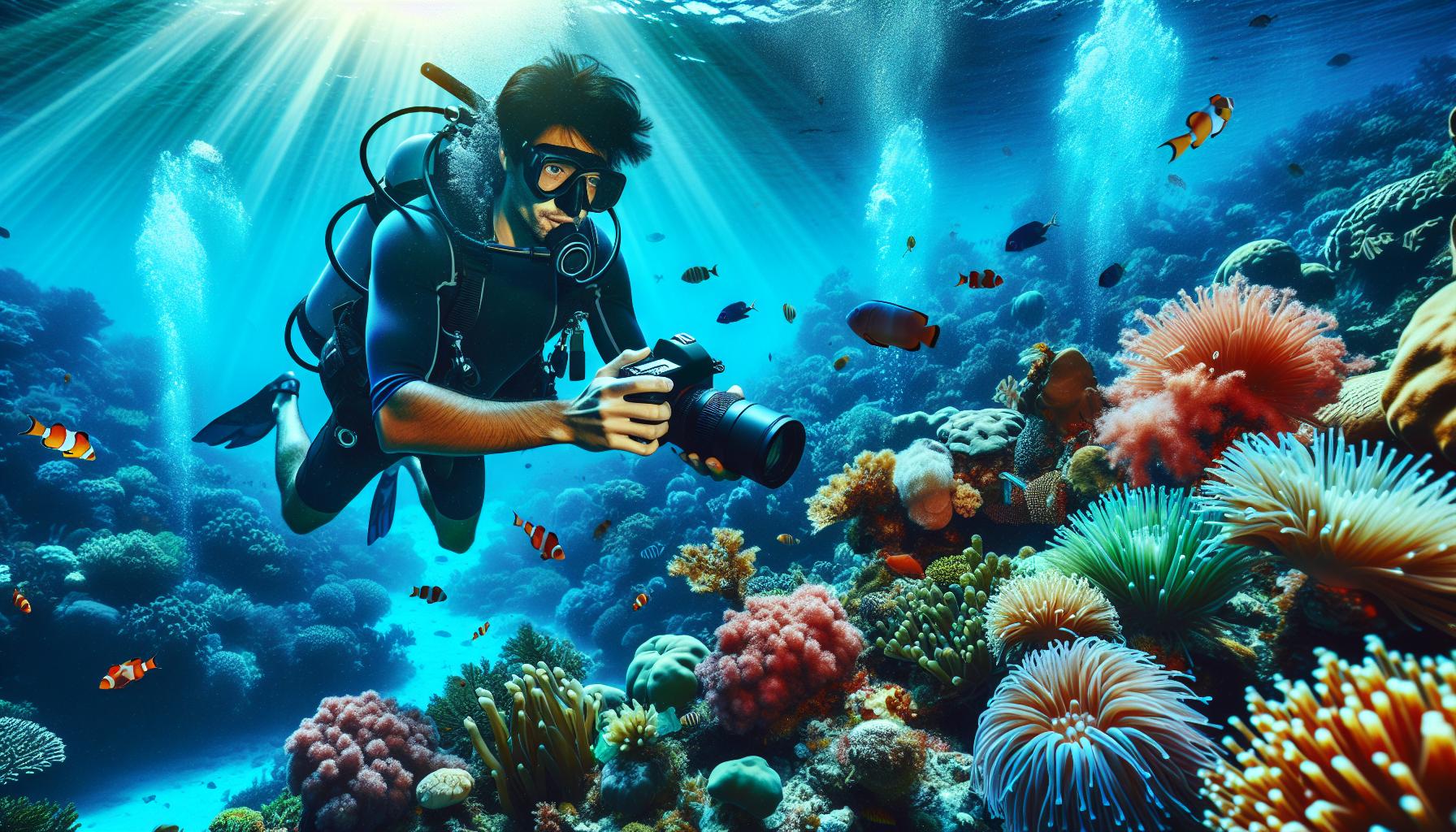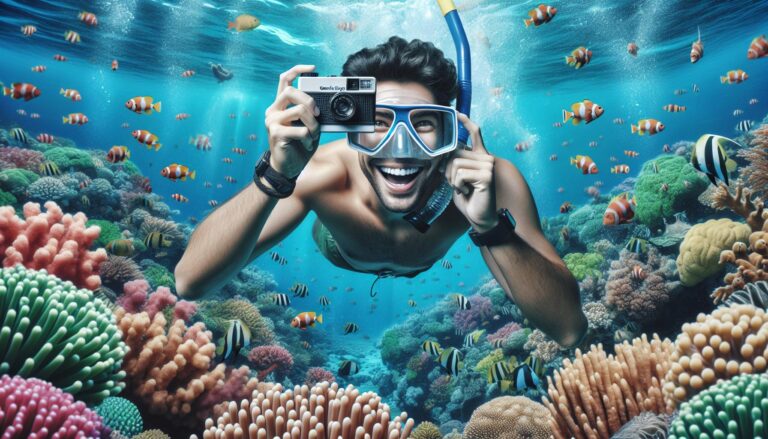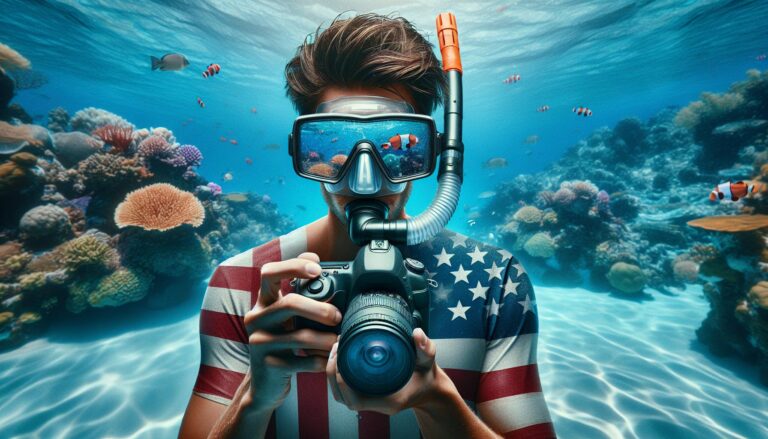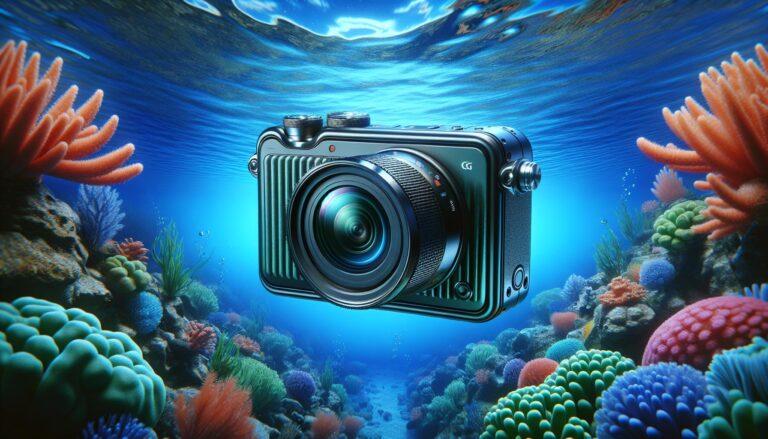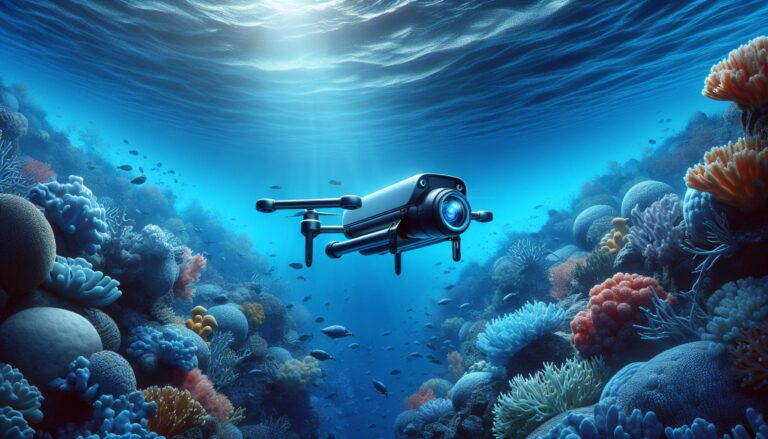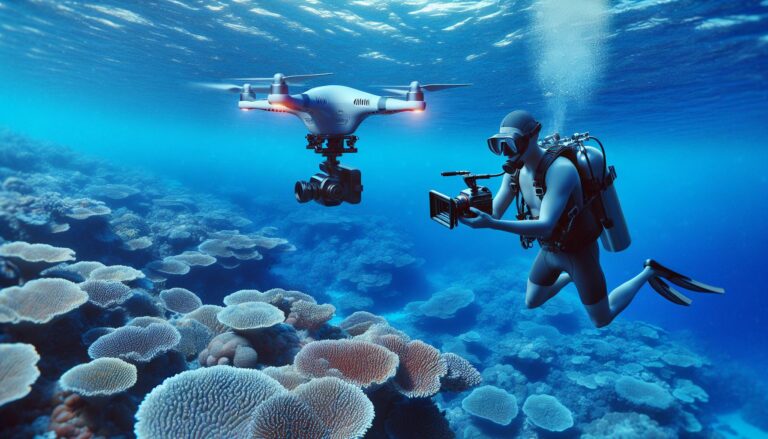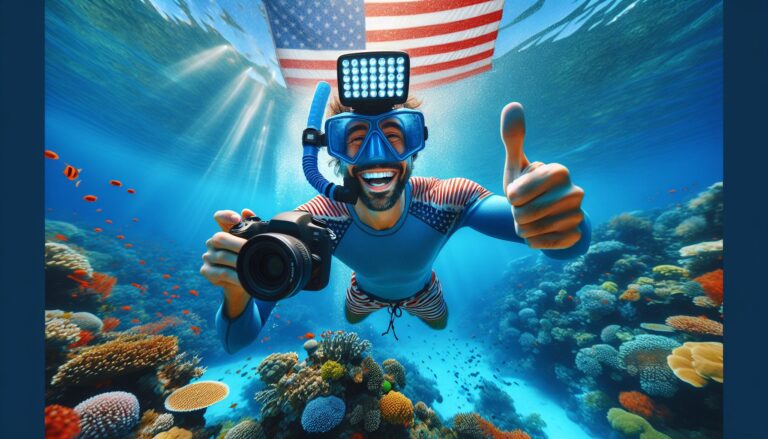Unveiling the Top Underwater Cameras for Scuba Diving: A Comprehensive Guide
Diving into the deep blue, you’re entering a world of vibrant coral reefs, intriguing marine life, and captivating underwater landscapes. But how can you capture these moments and bring a piece of the ocean back to the surface? That’s where a top-notch underwater camera comes in handy.
Understanding Underwater Cameras
Underwater cameras aren’t your everyday photography equipment; they’re specially engineered devices. Let’s delve into why they’re crucial for scuba diving and what salient features should you seek when selecting the best underwater camera.
The Importance of Underwater Cameras for Scuba Diving
Scuba diving transports you into an entirely different world, one that’s full of tantalizing wonders and breathtaking aquatic life. To eternalize these underwater experiences, you require an efficient underwater camera, specifically designed for this environment. Not only does an underwater camera enable you to snap stunning photos and film awe-inspiring videos, it also records your aquatic journey, serves as a logbook, and lets you share with others the beauty you’ve encountered beneath the depths.
Key Features to Look for in a Good Underwater Camera
Given the variety of underwater cameras available, pinpointing the one that serves your needs best involves knowing what features to look for. Here are some key factors:
- Durability: Ensure your camera is robust and can withstand the harsh underwater environment.
- Depth rating: Check the camera’s maximum depth limit. It dictates how deep you can take the camera underwater.
- Image and Video Quality: Opt for a camera that delivers top-notch image quality and records High Definition (HD) videos.
- Battery Life: A long-lasting battery ensures that you don’t need to constantly worry about your camera dying midway through your dive.
In-Depth Review of the Top Underwater Cameras for Scuba Diving
Deep-sea explorations become immortal memories when captured by the right equipment. This section gives an analysis of the top cameras built for underwater exploration, highlighting their specifications and unique features.
Camera 1: Detailed Review and Specifications
Considered a true frontrunner, let’s examine the Olympus Tough TG-6. Packed with raw capture, high speed F2.0 wide-angle lens, Olympus’ TG-6 withstands pressure up to a 50-feet depth. Sporting a 12MP Hi-Speed Image Sensor, it procures exceptional image and 4K video quality. Furthermore, its unique Macro System enhances close-ups providing impressive details. However, providing just 340 shots per charge, battery life may fall a tad short.
Camera 2: Detailed Review and Specifications
Shifting focus to the SeaLife DC2000, it’s a prime choice for many divers. Encased in a rubber-armored, shock-resistant body, this camera braves depths of up to 60 feet naked, and 200 feet with its underwater housing. With a Sony 20mp 1″ type back-illuminated CMOS image sensor, the DC2000 ensures superior image resolution. Nevertheless, 50 minutes video record time might limit extended explorations.
Camera 3: Detailed Review and Specifications
Lastly, I bring to the spotlight the GoPro Hero 8. Recognized for its hyper-smooth stability, this GoPro model films 4k video at depths of 33 feet without housing. It’s the smallest yet rugged design and live streaming ability make it perfect for adventurers sharing their experiences live. Its 12MP camera gives good image quality. On the downside, a fixed lens limits the underwater wide scene capture.
Comparing Underwater Cameras
Stepping up the comparison ladder, I’ll delve into a systematic evaluation of Olympus Tough TG-6, SeaLife DC2000, and GoPro Hero 8 based on crucial aspects: picture quality, ease-of-use, and durability.
Picture Quality Comparison
Olympus Tough TG-6, surprisingly, outpaces its contenders in picture quality. Its 12 MP high-speed image sensor delivers detailed images with undistorted colors, even at low light conditions under water. GoPro Hero 8 sits in the middle ground, producing 12 MP stills with impressive HDR functionality, but falls slightly behind the Olympus due to limited underwater specific shooting modes.
SeaLife DC2000, however, falls a tad short of its counterparts, sporting a 20 MP image sensor but lacking in richness and accuracy of colors compared to Olympus TG-6 and GoPro Hero 8.
| Camera Model | Megapixel | Performance |
|---|---|---|
| Olympus Tough TG-6 | 12 MP | Excellent |
| SeaLife DC2000 | 20 MP | Good |
| GoPro Hero 8 | 12 MP | Very Good |
Ease-of-use and Handling Comparison
Onto the handling aspect, GoPro Hero 8 triumphs thanks to its compact design, intuitive controls, and the seamless integration with the GoPro app. Its easy interface even enables beginners to capture impressive underwater footage. Olympus Tough TG-6, although not as straightforward as GoPro, offers a robust manual mode for more experienced photographers.
SeaLife DC2000, although easy to use, comes with a bulkier design that may not appeal to all divers. It does, nevertheless, offer innovative features like the “Piano Keys” that are designed for ease of use even with diving gloves on.
Durability and Design Comparison
Looking at the design and durability, Olympus has made the Tough TG-6 living up to its name. Its rugged design and protective double-sealing technology ensure it can safely descend to depths of 15m without a housing. Conversely, GoPro Hero 8 follows suit but requires additional protective housing for depths over 10m.
In contrast, SeaLife DC2000 appears considerably more durable with a depth rating of 60m, emphasizing its dominance in this classification. But this comes with a trade-off in size, as it is the bulkiest among the three.
Indubitably, every camera has its own strong points and weak spots, depending on what one values the most – be it picture quality, ease of use, or durability.
Factors to Consider when Buying an Underwater Camera for Scuba Diving
Selecting an underwater camera for scuba diving isn’t only about the brand or the price; it’s also about your individual needs and capabilities. Considering these factors can streamline your decision-making process, ensuring that you procure the perfect camera that meets your specific requirements and skills.
Assessing Your Diving Needs and Photography Skills
Firstly, understanding your personal diving needs and photography skills becomes prime. Taking into account the depth at which you usually dive, the frequency of diving, and the underwater lighting conditions are factors of high priority. For instance, if you’re a professional scuba diver, a camera with a high-depth rating, such as the SeaLife DC2000 with its 60m depth rating, may be ideal.
Additionally, evaluating your photography skills, including your understanding of basic photography principles and your ability to operate complex camera settings, is equally essential. An Olympus Tough TG-6, for example, with its advanced settings and 12 MP sensor, suits those with higher photographic knowledge.
Deciding on Your Budget
Next, deciding on a budget is a pivotal step. The cost of underwater cameras varies significantly, from affordable action cameras like the GoPro Hero 8 to substantial investment-worthy professional cameras. Careful budgeting allows you, without strain, to afford a product that offers good value for money. An inexpensive camera such as the GoPro Hero 8 grants ease of use for beginners. However, professionals looking for higher picture quality might opt to invest more in a model like the Olympus Tough TG-6.
Remember, when creating a budget, to include potential maintenance costs and the cost of accessories, such as housing cases, lights, or mounts, that may be necessary for your underwater photographic adventure.
Tips for Using Your Underwater Camera While Scuba Diving
After selecting the underwater camera that perfectly suits your diving needs and photography skills, it’s time we dive into the essential tips for using your camera while scuba diving. We’ll first explore how to properly handle and maintain your underwater camera, then dive into photography tips that’ll help you capture better underwater shots.
Handling and Maintenance Tips
Handling your camera with care and maintenance is crucial for its longevity and effective functioning. Always rinse your camera with fresh water after each diver, as saltwater can corrode your camera’s housing with continued exposure. Moreover, avoid harsh cleaning agents; a simple rinse and air dry works best.
Ensure a camera’s housing seals are clean and intact before each dive. Tiny grains of sand or hair can compromise a seal’s integrity, leading to water leakage. I suggest checking and re-checking O-ring seals for debris as a best practice.
Regularly update your firmware. Manufacturers often release firmware updates that enhance camera performance or fix known issues. Keep your camera at its peak performance by making sure it’s running the latest firmware.
Photography Tips for Better Underwater Shots
Mastering underwater photography demands practice and technique. Remember that underwater subjects, unlike terrestrial ones, are surrounded by a fluid media. The camera must compensate for the light refraction in the water and the potential lack of color due to depth. Here are a couple of tips to upgrade your underwater shots:
Shoot in RAW Format: Given the often challenging lighting conditions underwater, shooting in RAW format allows more post-processing flexibility.
Use Manual Settings: Mastering the manual settings of your camera gives you optimum control over exposure and focus.
Get close to your subject: Getting close helps reduce the amount of water between your camera and the subject, providing clearer, sharper images.
Finally, practice makes perfect! With time, patience, and plenty of dives, you’ll be capturing stunning underwater imagery like a professional.
Conclusion
Scuba diving’s allure isn’t just about the thrill of exploration. It’s also about capturing and sharing the beauty of the underwater world. With the right underwater camera, you’ll not only log your adventures but also hone your photography skills. Whether you’re a professional diver or an advanced hobbyist, there’s a camera out there that fits your needs and budget. Remember, the SeaLife DC2000 and the Olympus Tough TG-6 come highly recommended. But owning the best underwater camera isn’t enough. It’s essential to practice proper handling and maintenance for longevity. Shooting in RAW, using manual settings, and getting close to your subjects will significantly enhance your underwater images. And remember, practice and patience are your best friends in this journey. Dive in, start capturing, and let the world see the beauty that lies beneath the waves.

